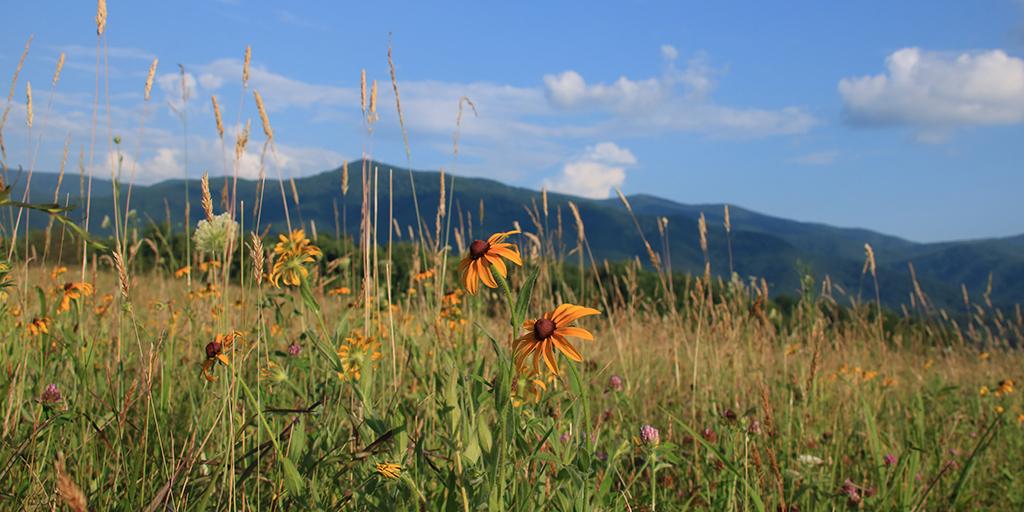Turning the calendar at Great Smoky Mountains National Park offers a wide range of weather...and a wide range of surroundings.

Spring at Cades Cove, Great Smoky Mountains National Park / NPS - Warren Bielenberg
Spring brings wildflowers in great profusion and a delightful range of color. White bloodroot and star chickweed in early March signal the end of winter. Fields of trillium line the trails in midspring. You may find pink lady slippers or even a lone yellow lady slipper. Later in the season rhododendron, mountain laurel, and flame azalea, our mountain Triple Crown winners, take over.

Andrews Bald and Forney Ridge Trail in the summer, Great Smoky Mountains National Park / NPS - Andrea Walton
In summer, as you climb higher, cool mountain breezes along high ridges give you that top-of-the-world feeling. Purple Catawba rhododendrons bloom at the highest altitudes. You can cool off by walking through shallow streams (keep your boots on to protect your feet) or wading in pools. Longer days allow you to hike farther. Summer’s jewelweed, spiderwort, and bee balm blossoms are easy to identify.

Autumn color along Newfound Gap Road, Great Smoky Mountains National Park / Phil Varney via Flickr
For many hikers, autumn is the favorite hiking season, with cooler temperatures and drier days. The yellows, reds, and oranges of the changing foliage are so vibrant that it sometimes seems as if the color will come off on your hand when you touch a leaf. Fall attracts touring motorists looking at the mountains, but as a hiker, you’ll be in the mountains. Asters, the last of the autumn flowers, hang on well after the first frost.

A snowy stream in the winter, Great Smoky Mountains National Park / NPS file
Mild winters in the Southern Appalachian allow for comfortable hiking, particularly at lower altitudes. In winter the leaves have fallen, even fewer people are on the trails, the air is crisp and clear, and insects have long since disappeared. Winter is not the time to put away your hiking boots. Instead, pull out your fleece jacket, pull on gloves and a hat, and get outside. You will be rewarded with winter views of mountain ridges above and valleys and gorges below, scenes that in other seasons may be hidden by foliage. Snow reveals animal tracks you would never see otherwise. Rime ice coating thin branches creates a surreal wonderland of shapes.
Climate-wise, in spring temperatures can range into the 70s (degrees F) near Cades Cove, but dip below freezing overnight near the roof of the park.
Summer, which is billed from June through August, can feature afternoon highs in the 90s, and warm nights in the 60s and 70s (degrees F). Along the highest ridgelines, though, the temperature might not surpass 80 degrees. Afternoon thunderstorms are quite common.
September through mid-November is fall, according to park officials. This just might be the driest season in the park, and with daytime highs ranging from the 70s and 80s (degrees F) in September to the 50s and 60s (degrees F) in November, it just might be the most pleasant season for hiking. Frost can arrive by late September, though, and a snowflake or two might show up in November.
Winter dominates the park’s calendar from mid-November through February, with January and February being the snowiest months.





